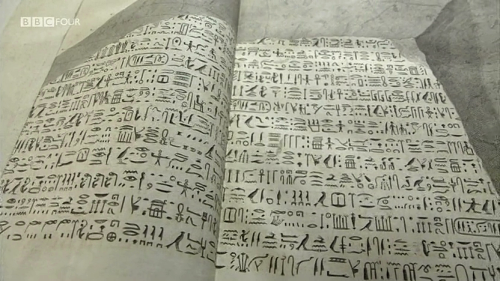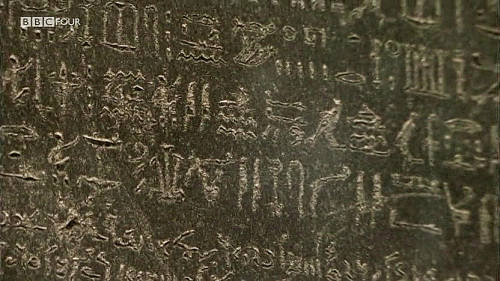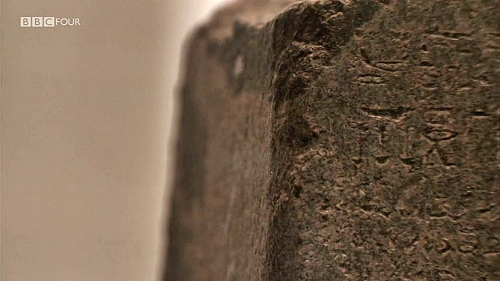#champollion
Archaeology: A Secret History - BBC Four
Episode 2 “The Search for Civilisation”
TheRosetta Stone was found on July 19, 1799, during Napoleon Bonaparte’s Egyptian campaign by French soldiers near the town of Rosetta (el-Rashid, about 65 km north of Alexandria). It contained fragments of passages written in three different scripts: Greek,Egyptian hieroglyphicsandEgyptian demotic.
On Napoleon’s defeat, the Rosetta Stone became the property of the British under the terms of the Capitulation of Alexandria (1801) along with other antiquities that the French had found. Before being put on public display, the stone was sent to the Society of AntiquariesinLondon to be copied. Four plaster-cast copies were made and distributed to four universities: Oxford, Cambridge, Edinburgh and Dublin. Hundreds of prints were produced and spread across Britain, sent to both individuals and to institutions. Direct copies were also made from the stone itself; ink was smeared over its surface before paper was laid down on it and the inscriptions were coloured in white chalk to make them more legible. Several scholars made progress with the initial hieroglyphics analysis but it was 20 years, however, before the transliteration of the Egyptian scripts was announced by Jean-François Champollion in Paris in 1822.
The decoding of the Rosetta Stone was a massive advance. It provided the key to the modern understanding of Egyptian hieroglyphs and the chronology of Egyptian history.
Today the Rosetta Stone is an archaeological icon and one of the treasures of the British Museum.
Pictures 1-2: A copy of an engraving of the Rosetta Stone, done in the Society of Antiquaries in 1801
Post link





